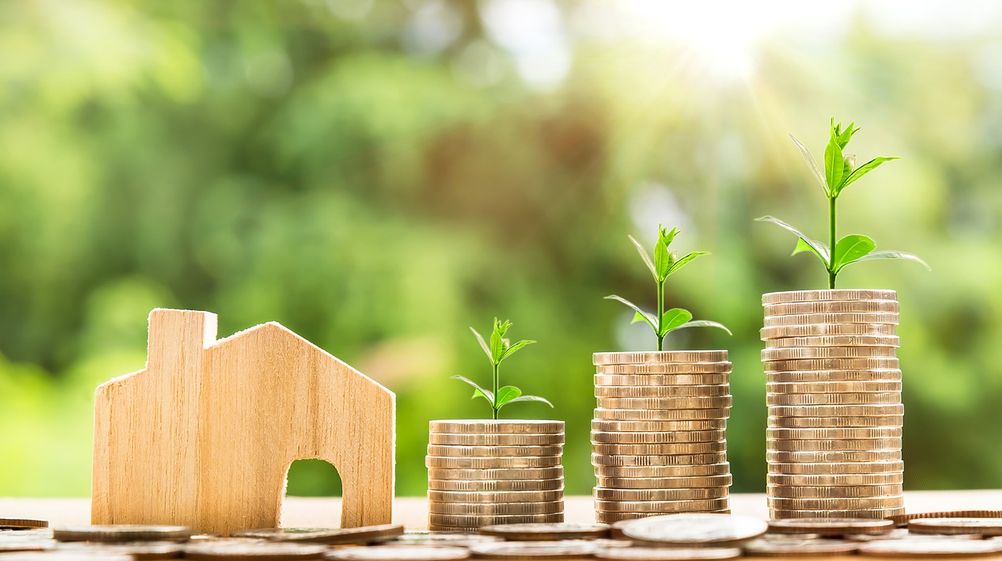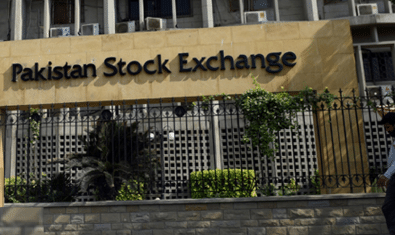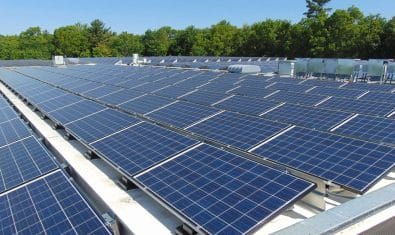Pakistan has embarked upon sustainable and inclusive growth. The economic indicators and recent developments signify the strength and reliability of the overall economic performance of the government in reinvigorating the economy, spurring growth, maintaining price stability, providing jobs to the youth, and rebuilding the key infrastructure of the country.
“The government is committed to correcting fundamentals of the economy through effective policymaking and targeted reforms with an aim to achieve sustainable and inclusive growth trajectory,” says a detailed statement issued by the Ministry of Finance to coincide with the independence day of Pakistan.
The present government started its journey with the vision of sustainable economic growth through improving efficiency, enhancing productivity, and increasing investment.
In this regard, a comprehensive agenda of economic reforms have been initiated through structural reforms rather than taking the usual route of pricing and fiscal adjustments. The measures are focused on establishing and strengthening the economy which is not only self-reliant but also capable of competing globally.
At the start of the fiscal year 2020, the economy started to observe a remarkable turnaround endorsing the government’s timely and much-needed policy actions requisite for addressing the macroeconomic imbalances.
Resultantly, the economy started moving progressively towards sustainable and inclusive growth. The measures paid off in terms of improved external and fiscal accounts, stability in the exchange market, growing investor confidence, tame down inflation. Thus, resulting in controlling twin deficits indicated that the economy has started moving towards sustainable growth.
External Sector
The external sector has been stabilized as the current account deficit narrowed by 77.9 percent during FY 2020. Pakistan’s exports were performing better until February 2020 than most of its competitors despite the challenging external environment.
Remittances
Remittances increased to a historic high of $23.1 billion as compared to $21.7 billion last year with a growth of 6.4 percent year on year. Foreign Direct Investment (FDI) increased by 88 percent and reached $2.6 billion during FY 2020 as compared to $1.4 billion in FY 2019.
Pak-China Free Trade Agreement
To further strengthen the external sector, the second phase of the Pak-China Free Trade Agreement was implemented. This will provide an opportunity for Pakistani manufacturers and traders to export around 313 new products to the Chinese market on zero duty. In addition, the National Tariff policy has been approved to remove anomalies in import duties structure which will be used as an instrument to catalyze industrial production for enhancing exports.
E-Commerce Policy
Similarly, the E-Commerce policy has also been approved with the vision of creating a business-friendly environment for holistic growth in all sectors especially E-commerce across the country.
The government’s various efforts remained supportive in improving fiscal accounts as all major fiscal indicators witnessed a visible improvement despite challenges in these difficult times of COVID-19 with the requisite fiscal stimulus package. The improvement is realized due to the government’s prudent fiscal strategy to improve the revenues through comprehensive tax measures and administrative reforms along with expenditure rationalization.
Fiscal Deficit
During FY 2020, fiscal deficit contained at 8.1 percent of GDP against 9.1 percent of GDP last year. The decline in fiscal deficit has been realized on account of impressive growth in total revenues (28 percent) relative to the growth in total expenditures (15.6 percent). Nontax revenues posted an historical impressive growth of 257 percent while tax revenues grew by 6.1 percent in FY 2020 over the last year.
Similarly, the primary balance which remained in surplus during the first nine months of FY 2020 converted into deficit by the end of FY 2020 but still contracted to 1.8 percent of GDP compared to 3.6 percent of GDP last year.
FBR Revenues
Within revenues, FBR’s tax collection grew by 4.4 percent to stand at Rs.3,998 billion in FY 2020 against Rs.3830 billion in FY 2019. It is worth mentioning FBR collected Rs.91 billion more than the revised target set for FY 2020 even when economic activities were suffering from lockdown due to COVID-19.
Despite major developments, the government remained well aware of the challenges that emerged due to stabilization measures like economic slowdown, price stabilization, low pace of job opportunities, and resultantly its impact on the lowest income groups of the society.
Reforms in key sectors of the economy encompassing agriculture, industrial and services sectors
Keeping in view the painful impact of these policies, the government has initiated reforms in key sectors of the economy encompassing agriculture, industrial, and services sectors.
To stimulate the agriculture sector, the government has announced a National Agriculture Emergency Program. Under this program, thirteen megaprojects at the cost of Rs. 277 billion are under execution. While to promote the industrial sector in general and to the manufacturing sector, in particular, the government has continued to provide
- Long-term Trade Financing (LTFF) and Export Finance Scheme (EFS) at subsidized rate (LTFF 6%, EFS 3%); construction package;
- Tax refunds and deferment of interest payments;
- Chota Karobar-o-Sannat Imadadi Package to support SMEs;
- Subsidies to industry for electricity and gas.
Relief to the vulnerable segments of the society
To provide relief to the vulnerable segments of the society, targeted poverty reduction interventions have been made through the Ehsaas program, BISP, Sehat Sahulat program, and expanding coverage of Waseela-e-Taleem program, etc.
The government made efforts to control the price hike which happened due to an increase in international commodity prices. And due to requisite upward adjustment in overdue gas and electricity prices, market-based exchange rate adjustments required for correcting macroeconomic imbalances.
Thus, the government made ensure a smooth supply of commodities by taking strict measures against hoarding, smuggling, and undue profiteering. Also, vigilant monitoring of prices both at the federal and provincial levels was ensured. Further, under the PM’s relief package, Rs. 10 billion has been released to the Utility Store Corporation.
Moreover Rs. 21 billion has already been disbursed to the USC for basic food items. Similarly, the government is taking several steps to reduce the prices of items of daily use, particularly wheat flour and sugar, and planning “targeted subsidy” to provide relief to the deserving persons. Overall, the emphasis has been on price control through different policy, administrative, and relief measures.
Job creation is one of the key objectives of economic reform agenda of the Government for which National Agriculture Emergency Program, “Kamyab Jawan Program (low-cost loans to youth for business)”, “Naya Pakistan Housing Program” to construct 5 million houses in 5 years and Ten Billion Tree Tsunami have been launched. The schemes will generate sizeable employment.
The government has launched the “Ehsaas Emergency Cash Program” with a total allocation of Rs. 144 billion to provide immediate cash relief of Rs. 12,000 to 12 million families of daily wage earners. Now, the Ehsaas Emergency Cash Program has completed its original target of distribution of funds to over 12 million beneficiaries, the government has set a new target of 16.9 million beneficiaries and budgetary allocation raised to Rs. 203 billion.
Employment Generation Activities
In addition, approval of a new ‘Shipping Policy’, ML-1 Railway Line Project under CPEC, incentive plan for the building and construction sector, and Amazon Data Services Pakistan (Pvt) Ltd (to bring its cloud computing business) will further stimulate the employment generation activities.
By the end of FY 2020, Pakistan’s economy suffered from COVID-19 out breakthrough various channels like declines in domestic & global demand, lower tourism and business travel, trade & production linkages and supply disruptions, etc.
The last quarter of the fiscal year 2020 bore the most significant brunt of the COVID-19 crisis. Prior to a pandemic, GDP growth was estimated at 3.24 percent for FY 2020, with agriculture 2.85 percent, industry 1.95 percent, and services 4.04 percent. However, FY2020 posted a negative growth of 0.4 percent (Provisional) against 1.91 percent (Revised) recorded in FY 2019 on the basis of 2.67, -2.64, and -0.59 percent growth in agricultural, industrial and services sectors, respectively.
The Government devised a comprehensive strategy to prevent the spread of the COVID-19 through early diagnosis, tracing and tracking of contacts, risk communication, social distancing, quarantine, and isolation. It has been recognized globally that Government of Pakistan has acted in a timely manner to mitigate the adverse effects of the pandemic and to preserve the socio-economic gains achieved through reforms agenda especially the largest ever Fiscal Stimulus package of Rs 1,240 billion that covers Emergency Response, Support to Business and Relief to Citizens. Further, a Relief package for Construction Sector was announced, so that the lower-income group associated with this sector may continue fulfilling their daily lives.
In order to meet the financing requirement for these expenditures, additional resources have also been mobilized through various international financial institutions including IMF, World Bank, Asian Development Bank (ADB), etc. As the new fiscal year 2021 started, early signs of economic recovery have started to unfold in terms of better tax collection by FBR and significant growth in exports.
Improvement in economic activities
The improvement in economic activities can be seen since the start of the new fiscal year FY 2021. After four months of decline, export from Pakistan registered an increase of 25 percent in July 2020 on MOM basis and 6 percent on year on year basis indicating a rebound in export-oriented industries. While Imports reduced by 2.0 percent to $ 3.6 billion against $3.7 billion last year. Consequently, the trade deficit reduced by 10.2 percent to $1.6 billion against $1.8 billion last year.
FBR tax collection witnessed an impressive performance as it grew by 4.7 percent to Rs. 290.5 billion against Rs. 277.3 billion last year. While the actual tax collection has surpassed the target of Rs. 243 billion set for July, FY 2021.
Similarly, on a monthly basis, LSM has started showing signs of recovery as it posted a positive growth of 16.8 percent in June 2020 over May 2020.
Another important indication of economic recovery is a significant rise in total cement dispatches. It increased by 37.8 percent to 4.838 million tons in July-2020 compared to 3.512 million tons in July-2019 while Domestic consumption increased by 32.7 percent to 3.953 million tons in July-2020 compared to 2.979 million ton in July-2019.
It is worth to mention that the Government initiatives and subsequent achievements were appreciated by the IFIs, in particular, IMF in its review (December 2019) appreciated that decisive policy implementation by the government is helping to preserve economic stability. In December 2019, Bloomberg ranked Pakistan Stock Exchange as one of the top-performing markets of the world.
International rating agencies S&P and Fitch appreciated government efforts and affirmed Stable Outlook. Recently, Moody’s has confirmed Pakistan’s rating at B3 with a stable outlook as external financing needs have declined relative to fiscal 2019 because of a narrower current account deficit, which occurred as a result of the macroeconomic adjustments over the past two years and continues to be supported by effective policies.
Pakistan ranked among ‘top ten best improvers’ in World Bank’s Ease of Doing Business Index 2020, Jumping up 28 places on the index and clinching the 108th position. Annual Security Survey 2020 conducted by Overseas Investors Chamber of Commerce and Industry (OICCI) in which foreign investors have shown an overall high level of satisfaction on the fast-improving security environment in Pakistan. This stance of foreign investors will surely help the economy by boosting up FDI.





















